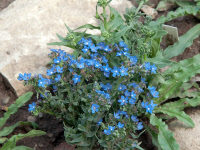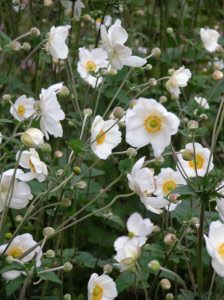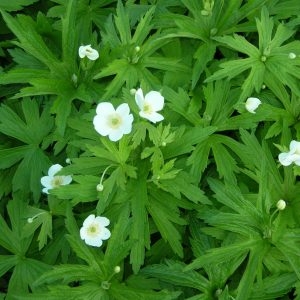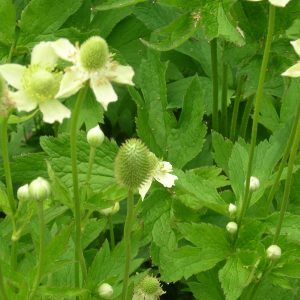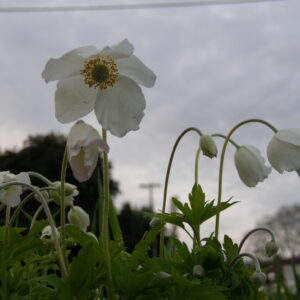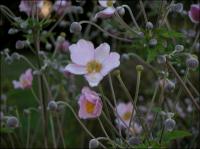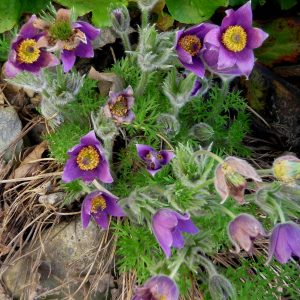Our Plants
Showing 33–40 of 587 results
-
Anchusa capensis Cape forget-me-not, Cape bugloss Z 6-9
Truest of blue flowers from summer through fall
OUT OF STOCK
Truest of blue flowers from summer through fall. Do you need to know anything else?
Reseeding annual in colder zones.
Size: 8” x 8”
Care: sun in well-drained to moist well-drained soil
Native: So. Africa.
Awards: Plant Select® Central Rocky Mountain regionCollected and introduced to Europe in 1794 by von Thunberg (1743-1828). Carl Peter von Thunberg, student of Linnaeus at Uppsala University in Sweden, made three trips to the Cape of Good Hope 1772-1775 where he collected about 1000 new species, Java and Ceylon (Sri Lanka) 1777 and 15 months in Japan where he befriended local doctors who gave him hundreds of plants new to Western horticulture. He succeeded Linnaeus as professor of medicine and botany at Uppsala and King Gustav beknighted him. Young Cape forget-me-not plants were eaten as a vegetable, Annals of the South African Museum, 1898. Louise Beebe Wilder loved this plant, effusing, “One of the prettiest (blue annuals) is the Cape Forget-me-not. Not one of its cerulean family boasts a purer blue and its summer-long period of bloom and indifference to drought make it a really valuable annual. It has also a sturdy habit of growth and sowing its hardy seeds freely it does its best to become a permanent resident.” Robinson called it “Remarkably fine…” The Garden 1873. The name Anchusa from anchousa paint used on skin.
-
Anemone ‘Honorine Jobert’ Windflower Z 4-8
Pearl-like buds open to graceful single white umbels in autumn.
Pearl-like buds open to elegant, single white umbels in autumn. One of internationally known garden designer Piet Oudolf’s 100 “MUST HAVE” plants, Gardens Illustrated 94 (2013)
Size: 4-5’x 12” and spreading
Care: Sun to part shade in moist to moist well-drained soil
Awards: Received England’s Royal Horticultural Society Award of Merit. 2016 Perennial Plant of YearThe Japanese anemone was first collected by Thunberg around 1776. Introduced to cultivation in the West when Robert Fortune (1812-1880) found them growing wild at a graveyard near Shanghai in 1844. Fortune remarked that the Anemone was “a most appropriate ornament to the last resting place of the dead.” Anemone ‘Honorine Jobert’ is a sport of a cross between Japanese anemone and A. vitifolia, introduced by Lady Amherst from Nepal in 1829. This white sport appeared in the nursery of Messier Jobert at Verdun-sur-Meuse in 1851. He propagated it and named it for his daughter, Honorine. The name Anemone is Greek for the wind, “so called, because the flower is supposed not to open, except the wind blows.” The Gardeners’ Dictionary, 1768.
-
Anemone canadensis Meadow anemone Z 3-8
Pristine pure white petal-like sepals frame many golden anthers in early summer
Pristine pure white petal-like sepals frame many golden anthers in early summer
Size: 12-24" x 12” spreading
Care: full sun to part shade in moist soil or moist well-drained soil
Native: North America as far south as Missouri, Wisconsin native
Wildlife Value: pollen for small bees
Size: Good groundcover under trees where soil is moist, naturalized garden.Collected by Meriwether Lewis August 17, 1804 on the 1st leg of the Expedition. Used medicinally by many Indian groups. The roots cleared up sores and leaves stopped nose bleeds for the Chippewa. It relieved the Iroquois of worms and counteracted witch medicine. For the Meskwaki this plant uncrossed crossed eyes. Ojibwa singers used it to clear their throats and remedy lower back pain. Sioux used the root to remedy several ailments – staunch bleeding, reduce lower back pain, sore eyes, crossed eyes and twitching of eyes. They also ate the root to clear the throat to boost good singing.
-
Anemone cylindrica Thimbleweed Z 4-7
Each stem grows from a whorl of leaves. and then a single, white 5-petaled flower tops the stem. The flower turns into a green cylinder then transforms to cottony clouds.
Each stem grows from a whorl of leaves. and then a single, white 5-petaled flower tops the stem. The flower turns into a green cylinder then transforms to cottony clouds.
Size: 2’ x 12”
Care: full sun to part shade in well-drained soil.
Native: Maine to Delaware, British Columbia to Arizona and all parts in between. Wisconsin native
Wildlife Value: Leaves causing mouth irritation deters rabbit and deer. Pollinated by bees and flies.HoChunk and Winnebago put masticated fuzz from the seeds on boils or carbuncles, opening them after a day. Sioux used the root, a tap root, to treat burns, headaches and headaches. Collected for botany from the wild before 1880’s. Plant emits allelopathogin inhibiting seed germination of weeds.
-
Anemone multifida Cutleaf anemone, Pacific anemone Z 2-6
Blooming in early summer and sporadically into fall, small six-petal-like sepals, watermelon pink, each with a center boss of sunny stamens subtended by deep palmately divided basal leaves.
Blooming in early summer and sporadically into fall, small six-petal-like sepals, watermelon pink, each with a center boss of sunny stamens subtended by deep palmately divided basal leaves.
Size: 9” x 6”
Care: part shade in humusy moist well-drained soil
Native: North America except the Arctic
Wildlife Value: hummingbirds build nests from seedheadsCollected by Scottish plant hunters Thomas Drummond & David Douglas west of the Rocky Mountains. Blackfoot Indians called this “Looks-like-a-plume.” The burned seed-head inhaled to stop a headache. British Columbia’s Thompson Indians used this to stop nose-bleeds, calling it “Bleeding Nose Plant.” This red/pink one collected by C.C. Parry before 1860. Parry (1832-1890) tagged as the king of Colorado botany.
-
Anemone sylvestris Snowdrop anemone/Wind flower Z 4-9
Spring and sporadically in fall - pure white saucers with contrasting yellow stamens
Spring and sporadically in fall – pure white saucers with contrasting yellow stamens
Size: 12-20" x 12-20" spreading
Care: Sun to part shade, moist well-drained soil
Native: Europe and Caucasus, “grows naturally in many parts of Germany… ”Gardeners’ Dictionary, 1768In 1629 Parkinson extolled the Anemone: “The sight of them doth enforce an earnest longing in the mind of anyone to be a possessour of some of them…” The leaves of the plant were used in ointment made into “cold grieses” was used to “warm and comfort the parts (and) the roote… is apt to drawe downe rheume if it be taste. The name Anemone is Greek for the wind, “so called, because the flower is supposed not to open, except the wind blows.” The Gardeners’ Dictionary, 1768. In Greek mythology Anemos, the Wind, uses these flowers to herald his coming in early spring. Grown by Jefferson at Monticello.
-
Anemone vitifolia ‘Robustissima’ syn. A tomentosa Z 4-8
Pearl-like buds open to single, ballerina- pink umbels in late summer and fall
Pearl-like buds open to single, ballerina- pink umbels in late summer and fall.
Size: 30"x 36" spreader
Care: Sun to part shade in moist to moist well-drained soil
Native: cultivated variety of A. vitifolia native to Nepal.The word Anemone is Sanskrit meaning he breathes. The Roman, Pliny wrote that the Anemone only opens with the wind. In Greek mythology Anemos, the Wind, uses these flowers to herald his coming in early spring, Paradisi in Sole Paradisus Terrestris.
In 1629 Parkinson extolled the Anemone: “The sight of them doth enforce an earnest longing in the mind of anyone to be a possessour of some of them…” The leaves of the plant were used in ointment made into “cold grieses” was used to “warm and comfort the parts (and herald his coming in early spring. the roote… is apt to drawe downe rheume if it be tasted or herald his coming in early spring. This cultivar introduced from its native Nepal to European garden cultivation by Lady Amherst in 1829. -
Anemone vulgaris syn. Pulsatilla vulgaris Pasqueflower Z 4-8
Nodding, bell-shaped purple petals with yellow centers, flowers in early spring. Medusa-like seed heads.
Nodding, bell-shaped purple petals with yellow centers, flowers in early spring. Medusa-like seed heads.
Size: 8" x 8"
Care: sun in well-drained to moist well-drained soil
Native: Europe
Wildlife Value: Deer resistant, early pollen source for bees.
Awards: Great Plants for Great Plains, Royal Botanical Society Award of Garden MeritCultivated in Europe since at least medieval times. Possibly used by the Druids (about 2000 years ago) in their festival of the dawn goddess. Grown in the Eichstätt Garden, the garden of Johann Konrad von Gemmingen, prince bishop of Eichstätt in Bavaria, c. 1600. Jefferson planted this in 1771 in a shrubbery at Monticello. Called Pasque flower because it blooms at Easter time, well, maybe for gardens in Missouri or Maryland.

